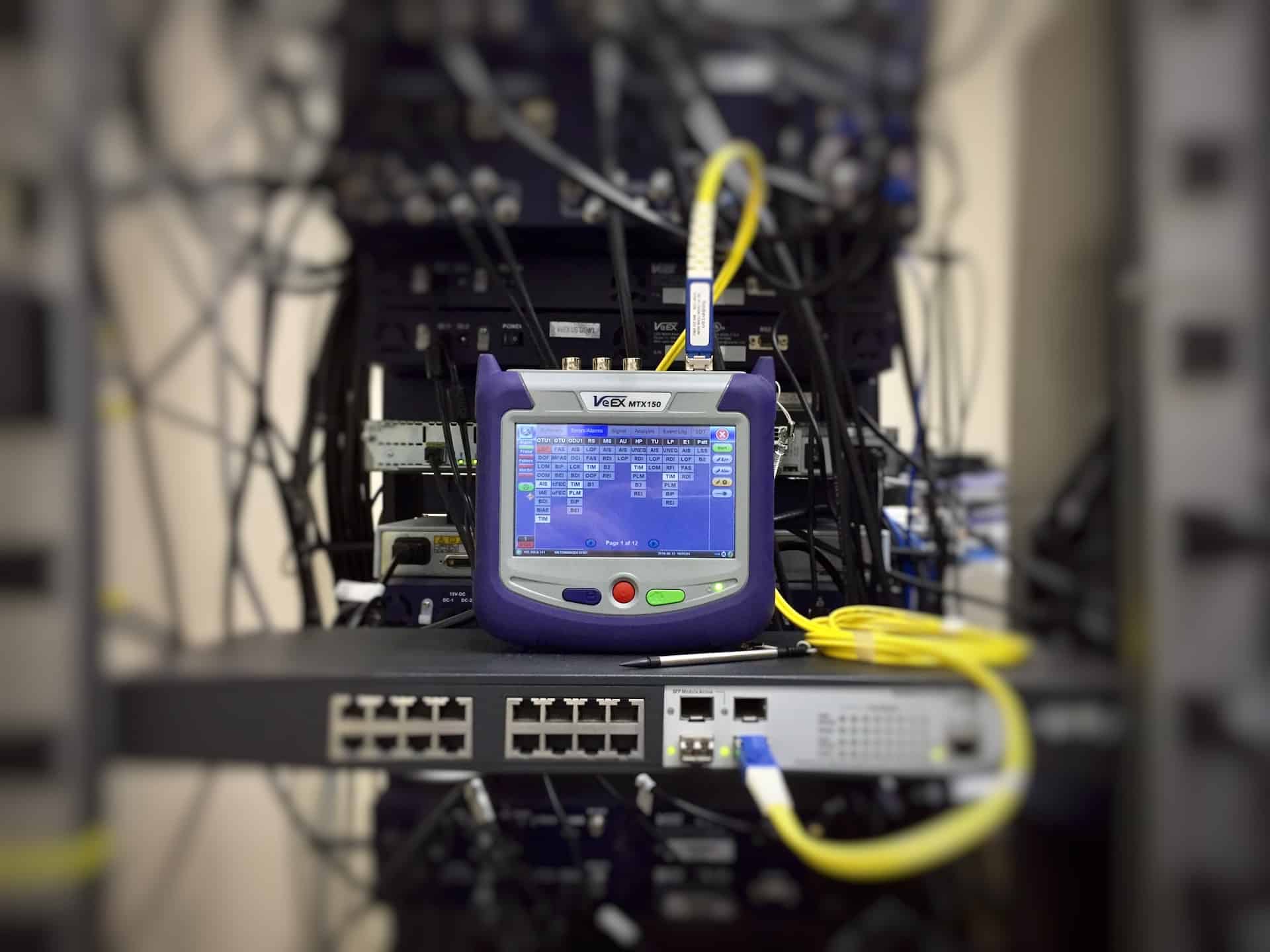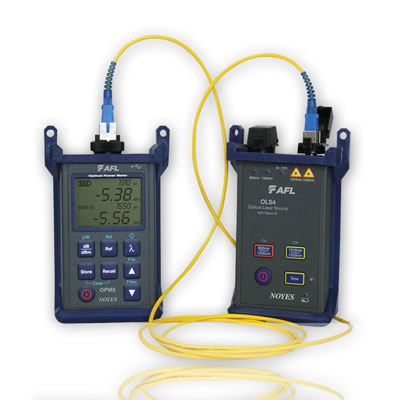Discover the Value of Optical Fibre Screening in Modern Telecommunications
In the realm of contemporary telecoms, the significance of optical fibre screening can not be overemphasized, as it works as the backbone for making sure network integrity and performance. By carrying out normal testing procedures, drivers can preemptively determine potential concerns such as signal destruction, thus guarding versus interruptions that might confirm costly. Advanced methods like Optical Time-Domain Reflectometry play a crucial duty in this procedure, yet lots of might ignore the wider effects of these techniques. What are the details advantages that normal screening deals, and exactly how might it form the future landscape of telecoms?

Understanding Optical Fiber Testing
Optical fiber testing is a vital procedure in telecommunications that makes sure the stability and performance of fiber optic networks. This screening encompasses a range of treatments developed to evaluate the physical and useful qualities of optical fibres - optical fibre testing equipment. Secret parameters analyzed include optical power loss, bandwidth capability, and fault place, which are vital for maintaining high-quality interaction links
The screening process typically entails using customized tools such as Optical Time-Domain Reflectometers (OTDR) and Optical Power Meters. OTDRs are utilized to recognize and identify mistakes, entwines, and ports within the fiber, while power meters gauge the transmitted light signal stamina to determine effectiveness.
Furthermore, testing is carried out at various phases, including throughout setup, upkeep, and troubleshooting, to make certain that the network satisfies industry criteria and operational needs. Compliance with criteria set by organizations like the International Telecommunication Union (ITU) and the Telecoms Sector Association (TIA) is vital.
Advantages of Regular Evaluating
Routine screening of optical fibers yields various advantages that dramatically enhance network reliability and performance. Among the key advantages is the early detection of prospective concerns, such as breaks or degradation in the fibre, which can bring about costly downtime if left unaddressed (ofda). By determining these issues proactively, telecoms companies can lessen service interruptions and make certain consistent connectivity for their customers
In addition, regular testing helps to keep the stability of signal top quality. As optical fibers age, their efficiency can be affected by elements such as ecological problems and physical anxiety. Routine analyses enable for the surveillance of signal loss and overall transmission effectiveness, guaranteeing that the network operates at optimal degrees.
Another considerable benefit is conformity with market criteria. Routine screening supports adherence to regulative demands, consequently alleviating lawful and financial risks related to non-compliance. It enhances the overall life-span of the fiber infrastructure by facilitating prompt upkeep and repairs.

Usual Checking Approaches
Evaluating optical fibers uses different approaches to guarantee the stability and efficiency of telecoms networks. Amongst one of the most usual strategies is Optical Time Domain Reflectometry (OTDR), which analyzes the entire length of the fibre by sending out a pulse of light and determining the reflections created by imperfections or breaks. This technique provides comprehensive info regarding the location and severity of mistakes.
An additional common approach is using Optical Power Meters, which measure the amount of light transferred through the fiber. This technique helps identify the loss of signal toughness, making certain that it meets sector requirements. Additionally, Visual Fault Locators (VFL) are utilized to recognize breaks or serious bends in the fiber by forecasting a visible laser light right into the cable.
Insertion loss testing is likewise important, as it quantifies the loss of signal power resulting from connections and splices within the network. In addition, making use of Polarization Setting Diffusion (PMD) testing examines the effect of fiber characteristics on signal honesty.
Each of these approaches plays a crucial duty in preserving the efficiency and reliability of optical fiber networks, inevitably contributing to smooth telecommunications operations.
Influence On Network Efficiency
The integrity and performance of optical fibre useful content networks straight influence general network efficiency. In contemporary telecommunications, the performance of data transmission depends greatly on the top quality of the optical fibres utilized. Any deterioration in the fiber's problem-- whether as a result of physical damages, contamination, or extreme bending-- can lead to raised depletion and signal loss, dramatically influencing information stability and rate.
Regular optical fibre screening is necessary to recognize and remedy prospective issues before they materialize as network failings or slowdowns. Methods such as Optical Time Domain Reflectometry (OTDR) and insertion loss screening enable service technicians to measure the performance of fibre web links properly. These tests not just evaluate the physical problem of the fibers yet also guarantee conformity with industry criteria, thereby securing the network's dependability.
Moreover, a well-kept optical fibre network adds to reduced functional expenses and enhanced customer satisfaction, as end-users experience fewer disruptions and greater data prices. Ultimately, the focus on strenuous optical fibre testing practices acts as a keystone for maintaining durable telecoms infrastructure, ensuring that company can satisfy the expanding needs for data transfer and connection in today's digital age.
Future Trends in Examining
As we look in advance, improvements in innovation are positioned to improve optical fibre screening in telecoms. The rise of automation and man-made knowledge (AI) is expected to boost redirected here the performance and accuracy of screening processes. Automated testing systems can conduct comprehensive analyses with very little human treatment, substantially minimizing the possibility for errors and accelerating time-to-deployment.
Additionally, the assimilation of maker knowing algorithms will make it possible for anticipating maintenance, enabling network carriers to anticipate prospective problems prior to they escalate right into failings. This proactive strategy not only improves network integrity but likewise maximizes functional expenses.
Another arising pattern is the development of portable screening tools that use real-time evaluation - fibre testing equipment. These tools will empower specialists to perform on-site diagnostics rapidly, facilitating quicker resolutions and improving solution high quality
The development of 5G networks better requires the advancement of screening approaches. As data transfer needs have a peek at this website raise, typical screening strategies might no more are adequate. Innovative remedies such as optical time-domain reflectometry (OTDR) and advanced spooky analysis will certainly become vital in guaranteeing the integrity and performance of high-speed connections.

Final Thought
In conclusion, optical fibre testing is vital for making certain the integrity and dependability of contemporary telecoms networks. Regular screening practices not only aid determine possible problems such as signal loss and mistakes however likewise add to enhanced network performance and consumer fulfillment. As the need for seamless connection remains to grow, the fostering of innovative screening approaches will certainly play a critical duty in keeping top notch network standards and supporting the developing landscape of telecommunications.